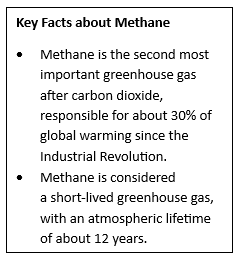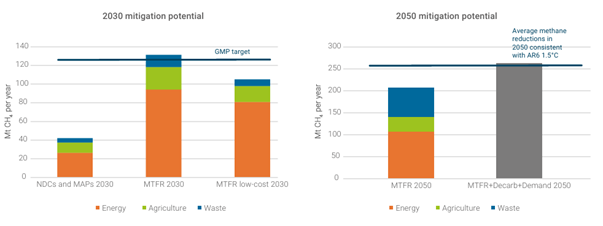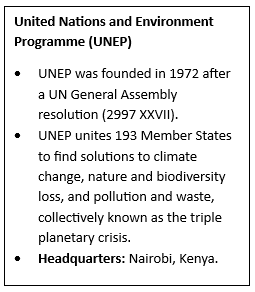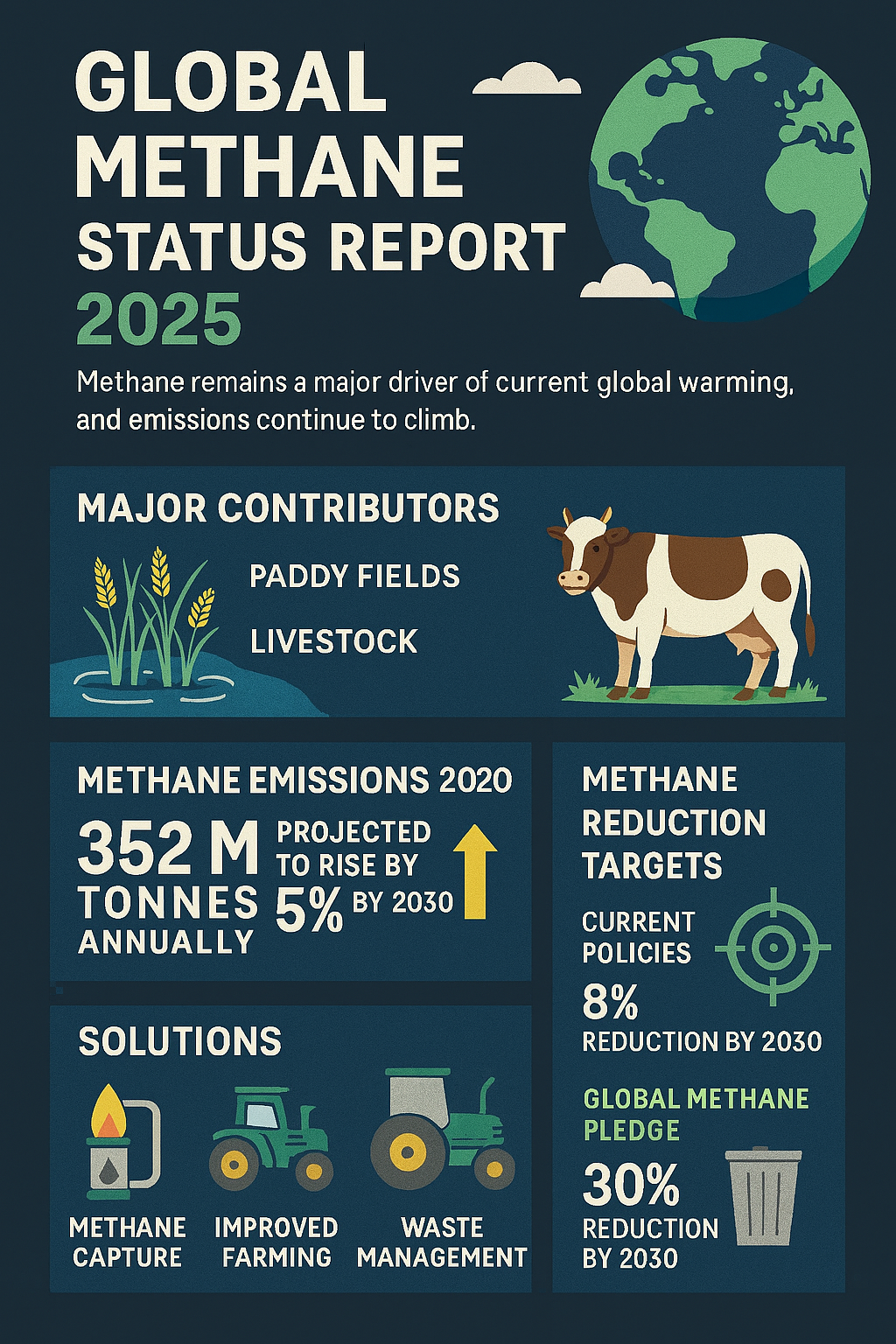SYLLABUS
GS-3: Conservation, environmental pollution and degradation, environmental impact assessment
Context:
Methane emissions are projected to be about 5% higher in 2030 compared to 2020 according to the Global Methane Status Report 2025.
Key Highlights of the Report

- Global Methane Emissions:
- China and the United States are the largest and second-largest methane emitters globally, respectively.
- Methane is over 80 times more potent than CO₂ over a 20-year timeframe.
- Anthropogenic methane emissions were 352 million tonnes in 2020, projected to rise to 369 million tonnes by 2030 under existing policies.
- Methane from waste burning increased by 43% between 1995 and 2020, rising from 56 to 80 million tonnes.
- The new current legislation (CLE) scenario projects that methane emissions in 2030 will be 14 million tonnes lower than previously estimated, which equals over 10% of the current annual methane emissions from the global energy sector.
- The G20-plus EU, Norway, Switzerland, Iceland, New Zealand together emit 65% of global methane.
- Global Mitigation Potential:
- The energy sector accounts for 72% of the global technical mitigation potential for 2030, followed by agriculture and waste.
- Full-scale methane reduction could avoid 0.2°C warming by 2050 and prevent 180,000 premature deaths annually by 2030.
- India-Specific Findings:
- India is the third-largest methane emitter, producing about 31 million tonnes annually nearly 9% of global emissions.
- In 2020, agriculture produced approximately 20 million tonnes of methane, compared to 4.5 million tonnes from the energy sector.
- Agriculture remains the leading source of methane emissions, with livestock and rice cultivation accounting for about 12% of global agricultural methane output.
- Methane from waste burning rose from 4.5 million tonnes in 1995 to 7.4 million tonnes in 2020, marking a 64% increase.
- India is a Hotspot because:

- Methane from crop residue burning is increasing and now forms one of the fastest-growing emission sources in India.
- Waste management challenges have raised methane emissions in urban and peri-urban regions.
- India remains one of the few major emitters that has not included agricultural methane mitigation in its NDCs.
Important Active Global Programmes identified by the Report

- Global Methane Pledge: It was launched at COP26, this pledge unites 159 countries and the EU to collectively reduce global methane emissions by at least 30% from 2020 levels by 2030.
- Methane Alert and Response System (MARS): It is an advanced monitoring system that uses satellite data and analytics to detect large methane leaks worldwide in near real-time.
- Zero Routine Flaring by 2030: It is a global initiative to end routine natural gas flaring in oil production by 2030.
- Oil and Gas Decarbonisation Charter: The charter supports technologies and policies that limit methane leaks, improve energy efficiency, and transition to lower-carbon operations.
About the Report
- The Global Methane Status Report (GMSR) 2025 is released by United Nations and Environment Programme (UNEP) and the Climate and Clean Air Coalition (CCAC).
- It reviews progress under the Global Methane Pledge and serve as a key assessment of progress on global methane reduction targets.
Sources:
Down to Earth
UNEP Org

